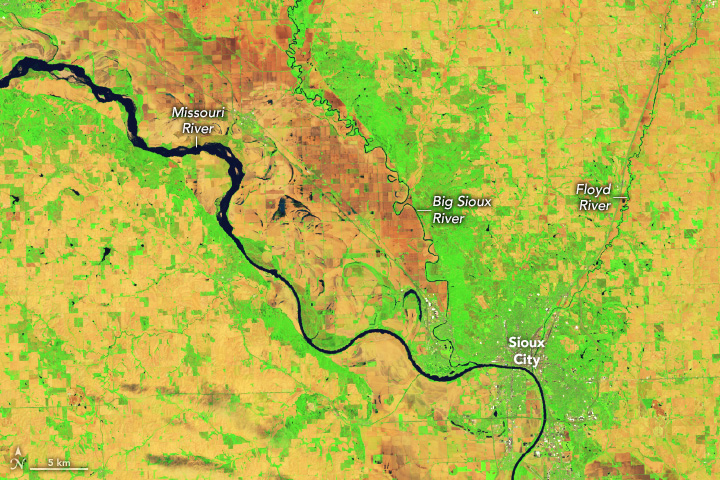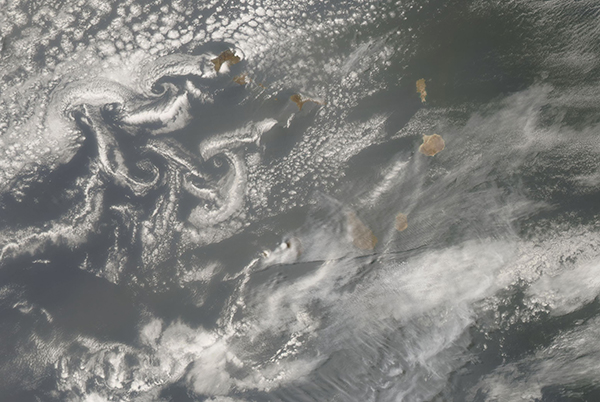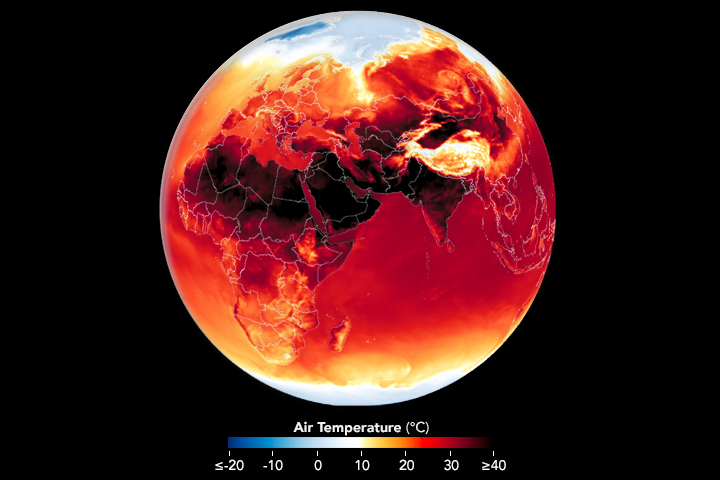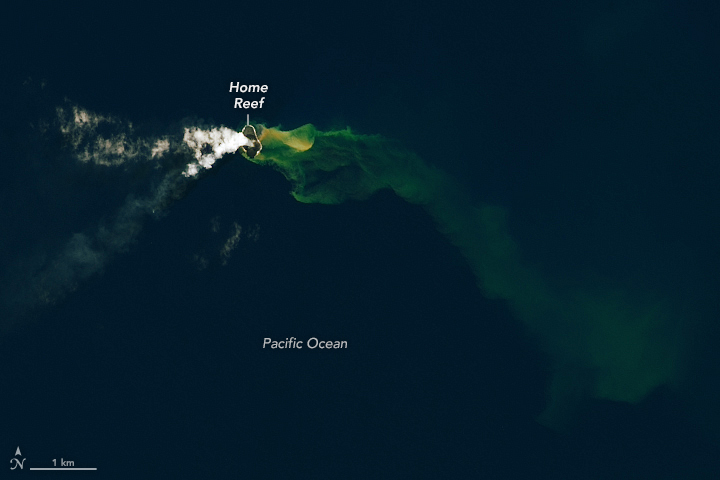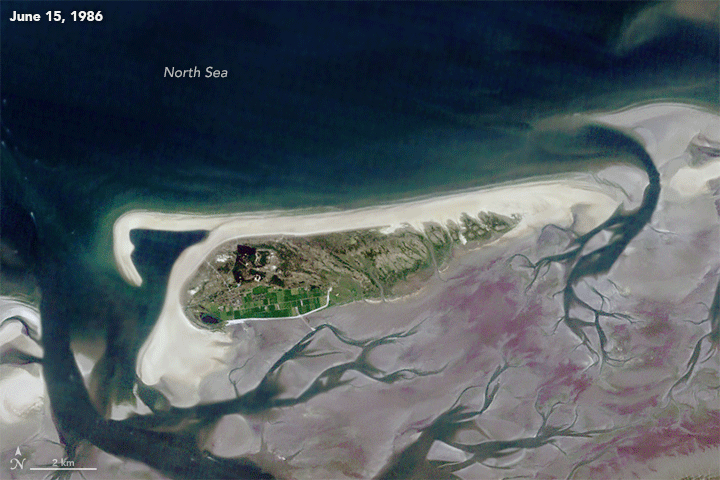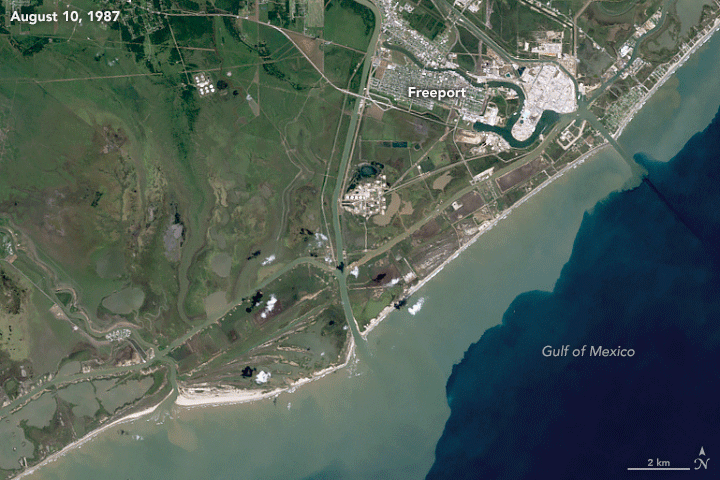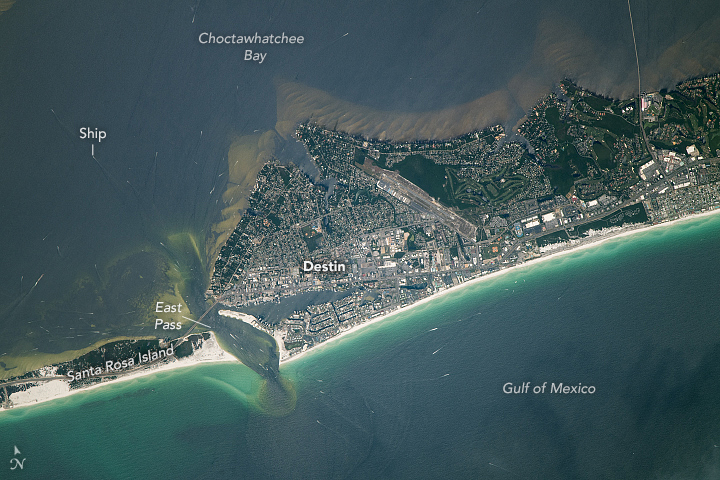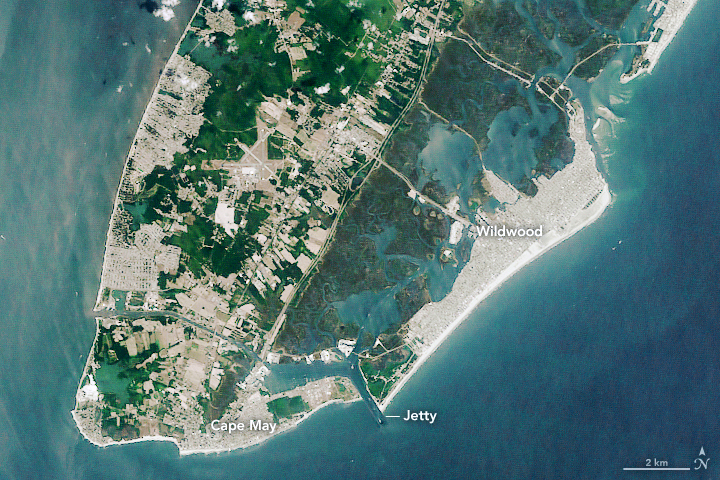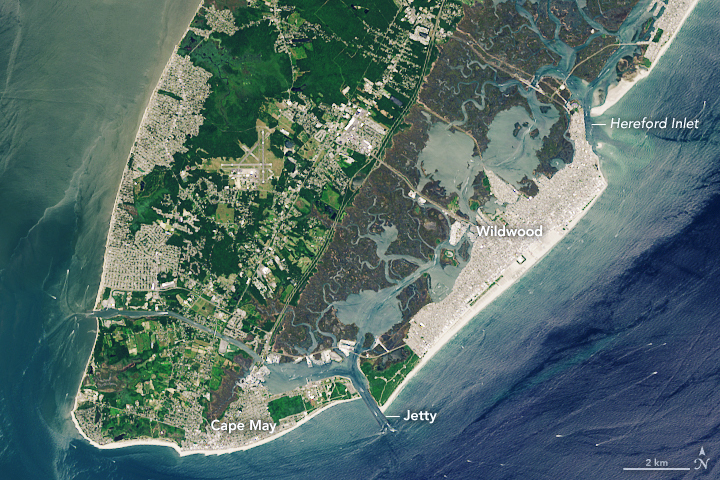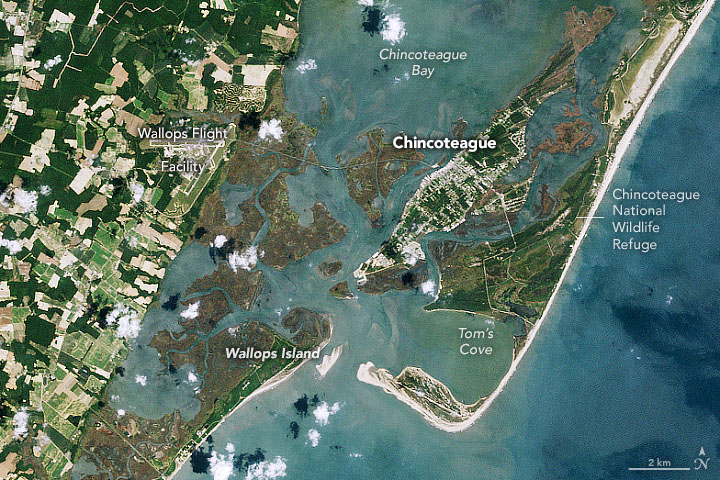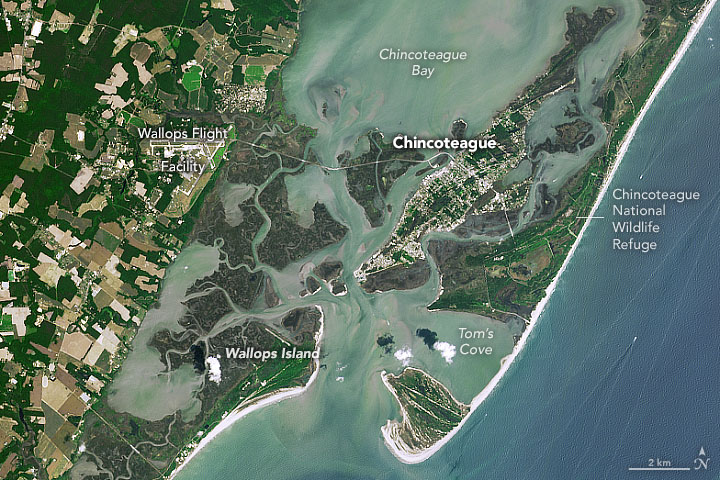Weather history miscellany
Re: Weather history miscellany
https://www.weatherforyou.com/weather_history/6-26
1888 - Residents of New York suffered through a record heat wave. Daily average temperatures were above 80 degrees for fourteen straight days. The heat wave was a sharp contrast to the severe blizzard in March of that year, which buried the city under nearly two feet of snow. (David Ludlum)
1988 - Thirteen cities in the southeastern U.S. reported record high temperatures for the date. In Montana, the record high of 102 degrees at Billings, MT, was their fifteenth of the month, and the high of 108 degrees at Glasgow MT equalled their record for June. Thunderstorms in the Atlantic Coast Region produced wind gusts to 102 mph at Tall Timbers MD. (Storm Data) (The National Weather Summary)
1888 - Residents of New York suffered through a record heat wave. Daily average temperatures were above 80 degrees for fourteen straight days. The heat wave was a sharp contrast to the severe blizzard in March of that year, which buried the city under nearly two feet of snow. (David Ludlum)
1988 - Thirteen cities in the southeastern U.S. reported record high temperatures for the date. In Montana, the record high of 102 degrees at Billings, MT, was their fifteenth of the month, and the high of 108 degrees at Glasgow MT equalled their record for June. Thunderstorms in the Atlantic Coast Region produced wind gusts to 102 mph at Tall Timbers MD. (Storm Data) (The National Weather Summary)
Re: Weather history miscellany
https://www.weatherforyou.com/weather_history/6-27
1988 - The afternoon high of 107 degrees at Bismarck, ND, was a record for the month of June, and Pensacola, FL, equalled their June record with a reading of 101 degrees. Temperatures in the Great Lakes Region and the Ohio Valley dipped into the 40s. (The National Weather Summary)
1988 - The afternoon high of 107 degrees at Bismarck, ND, was a record for the month of June, and Pensacola, FL, equalled their June record with a reading of 101 degrees. Temperatures in the Great Lakes Region and the Ohio Valley dipped into the 40s. (The National Weather Summary)
Re: Weather history miscellany
https://www.weather.gov/abr/This_Day_in ... ory_Jun_28
1788: The Battle of Monmouth in central New Jersey was fought in sweltering heat. The temperature was 96 degrees in the shade, and there were more casualties from the heat than from bullets.
1924: An estimated F4 tornado struck the towns of Sandusky and Lorain, killing 85 people and injuring over 300. This tornado is the deadliest ever in Ohio history. Click HERE for some images from Ohio Historical Society.
1788: The Battle of Monmouth in central New Jersey was fought in sweltering heat. The temperature was 96 degrees in the shade, and there were more casualties from the heat than from bullets.
1924: An estimated F4 tornado struck the towns of Sandusky and Lorain, killing 85 people and injuring over 300. This tornado is the deadliest ever in Ohio history. Click HERE for some images from Ohio Historical Society.
Re: Weather history miscellany
https://www.weather.gov/abr/This_Day_in ... ory_Jun_29
1826: Thomas Jefferson made his last entry in his weather observation log on this date, just six days before he died. The weather held a fascination for Jefferson as he made regular weather observations. He bought his first thermometer while working on the Declaration of Independence and his first barometer shortly after that.
1904: Tornado hits Karacharov Village area of Moscow killing about 24 people.






Click HERE for more information from englishrussia.com
1998: "The Corn Belt Derecho of 1998" in the following states NE, IA, IL, IN, KY. A derecho which originated in far southeast South Dakota moved across Illinois during the afternoon and evening and continued as far east as Ohio the next morning. Every county in central Illinois sustained some damage, as these severe thunderstorms passed. Winds gusted in the 60 to 80 mph range, with some localized microbursts producing winds more than 100 mph. Significant damage occurred in the microburst areas, including the towns of Morton, McLean, LeRoy, and Tolono. In Tolono, 22 cars of a southbound 101-car Illinois Central freight train were blown off the tracks. It was unknown how many vehicles were picked up by the wind, but 16 cars were turned over, and another six derailed but remained upright. The train was en route to Centralia from Chicago with a load of mixed freight, including plastic pellets and meal. The freight cars empty weighed about 60,000 pounds, while a full one weighs about 260,000 pounds. Overall, 12 people were injured, and damage was estimated at around $16 million. Click HERE for more information from the Storm Prediction Center.
1826: Thomas Jefferson made his last entry in his weather observation log on this date, just six days before he died. The weather held a fascination for Jefferson as he made regular weather observations. He bought his first thermometer while working on the Declaration of Independence and his first barometer shortly after that.
1904: Tornado hits Karacharov Village area of Moscow killing about 24 people.






Click HERE for more information from englishrussia.com
1998: "The Corn Belt Derecho of 1998" in the following states NE, IA, IL, IN, KY. A derecho which originated in far southeast South Dakota moved across Illinois during the afternoon and evening and continued as far east as Ohio the next morning. Every county in central Illinois sustained some damage, as these severe thunderstorms passed. Winds gusted in the 60 to 80 mph range, with some localized microbursts producing winds more than 100 mph. Significant damage occurred in the microburst areas, including the towns of Morton, McLean, LeRoy, and Tolono. In Tolono, 22 cars of a southbound 101-car Illinois Central freight train were blown off the tracks. It was unknown how many vehicles were picked up by the wind, but 16 cars were turned over, and another six derailed but remained upright. The train was en route to Centralia from Chicago with a load of mixed freight, including plastic pellets and meal. The freight cars empty weighed about 60,000 pounds, while a full one weighs about 260,000 pounds. Overall, 12 people were injured, and damage was estimated at around $16 million. Click HERE for more information from the Storm Prediction Center.
Re: Weather history miscellany
https://www.weather.gov/abr/This_Day_in ... ory_Jun_30
1792: The first recorded tornado in Canadian history struck the Niagara Peninsula between Foothill and Port Robinson, leveling some houses and uprooting trees between the communities.
1900: The combination of high winds and the presence of wooded fuel-filled cargo helped to spread fire on the Hoboken Docks in New Jersey. The fire began when cotton bales caught fire and spread to nearby volatile liquids. The fire killed at least 300 people and was seen in New York City.
1912: An estimated F4 tornado ripped through Regina, Saskatchewan, Canada on this day. The storm became the deadliest tornado in Canada's history as it killed 28 people along a rare, 18.5-mile track from south to north.
1792: The first recorded tornado in Canadian history struck the Niagara Peninsula between Foothill and Port Robinson, leveling some houses and uprooting trees between the communities.
1900: The combination of high winds and the presence of wooded fuel-filled cargo helped to spread fire on the Hoboken Docks in New Jersey. The fire began when cotton bales caught fire and spread to nearby volatile liquids. The fire killed at least 300 people and was seen in New York City.
1912: An estimated F4 tornado ripped through Regina, Saskatchewan, Canada on this day. The storm became the deadliest tornado in Canada's history as it killed 28 people along a rare, 18.5-mile track from south to north.
Re: Weather history miscellany
https://www.weather.gov/abr/This_Day_in ... ory_Jul_01
2002: San Antonio, Texas recorded 9.52 inches of rain on this day to set a new record for its greatest rainfall for the entire month of July. Click HERE for more information from the NWS Office in San Antonio.
2002: San Antonio, Texas recorded 9.52 inches of rain on this day to set a new record for its greatest rainfall for the entire month of July. Click HERE for more information from the NWS Office in San Antonio.
Re: Weather history miscellany
https://www.weatherforyou.com/weather_history/7-2
1988 - Twenty-six cities in the eastern U.S. reported record low temperatures for the date. The morning low of 47 degrees at Roanoke, VA, broke the July record set the previous day. (The National Weather Summary)
1988 - Twenty-six cities in the eastern U.S. reported record low temperatures for the date. The morning low of 47 degrees at Roanoke, VA, broke the July record set the previous day. (The National Weather Summary)
Re: Weather history miscellany
https://www.weather.gov/abr/This_Day_in ... ory_Jul_03
2000: There is a certain irony about one of the driest places getting the greatest rainfall, and yet that is what happened at usually rain-sparse Vanguard, Saskatchewan on July 3 when a carwash-like downpour flooded the community of 200 people, some 65 km southeast of Swift Current. As much as 375 mm (14.76”) of rain fell in eight hours, the greatest storm for that duration on the Canadian Prairies and one of the most substantial rainfall intensities ever recorded in Canada.
The spectacular thunderstorm produced more cloud-to-ground lightning strikes than that part of southern Saskatchewan would expect in two years. A year's amount of rain left crops in the field drowning and rotting, and roads and rail lines under water. The force of the water crushed cars and farm implements swept away grain bins and soaked large bales. Stranded residents had to be rescued by boat, which rapidly became the carrier of choice on the main street in Vanguard. The flash flood also carried away herds of cattle and drowned dozens of deer and antelope. Some further irony, when millions of liters of contaminated water submerged the water-treatment plant and backed up into homes and businesses, officials had to ship in bottled water from Swift Current.
2000: There is a certain irony about one of the driest places getting the greatest rainfall, and yet that is what happened at usually rain-sparse Vanguard, Saskatchewan on July 3 when a carwash-like downpour flooded the community of 200 people, some 65 km southeast of Swift Current. As much as 375 mm (14.76”) of rain fell in eight hours, the greatest storm for that duration on the Canadian Prairies and one of the most substantial rainfall intensities ever recorded in Canada.
The spectacular thunderstorm produced more cloud-to-ground lightning strikes than that part of southern Saskatchewan would expect in two years. A year's amount of rain left crops in the field drowning and rotting, and roads and rail lines under water. The force of the water crushed cars and farm implements swept away grain bins and soaked large bales. Stranded residents had to be rescued by boat, which rapidly became the carrier of choice on the main street in Vanguard. The flash flood also carried away herds of cattle and drowned dozens of deer and antelope. Some further irony, when millions of liters of contaminated water submerged the water-treatment plant and backed up into homes and businesses, officials had to ship in bottled water from Swift Current.
Re: Weather history miscellany
https://www.weather.gov/abr/This_Day_in ... ory_Jul_04
1776: Thomas Jefferson purchased a thermometer from a local merchant before signing the Declaration of Independence. According to his weather memorandum book, at 1 PM it was cloudy and 76 degrees.
1776: Thomas Jefferson purchased a thermometer from a local merchant before signing the Declaration of Independence. According to his weather memorandum book, at 1 PM it was cloudy and 76 degrees.
Re: Weather history miscellany
https://www.weatherforyou.com/weather_history/7-5
1900 - A spectacular three day fire began when a bolt of lightning struck a refinery in Bayonne NJ. (David Ludlum)
1916 - A hurricane produced 82 mph winds, an 11.6 foot tide, and a barometric pressure of 28.92 inches at Mobile, AL. (David Ludlum)
1970 - The morning low at Death Valley CA was 103 degrees, and the high that afternoon was 120 degrees. (The Weather Channel)
1988 - Afternoon and evening thunderstorms spawned eleven tornadoes in Montana and three in North Dakota. Baseball size hail was reported at Shonkin, MT, and wind gusts to 85 mph were reported south of Fordville, ND. Twenty cities in the north central U.S. reported record high temperatures for the date, including Fargo ND with a reading of 106 degrees. Muskegon, MI, equaled their July record with a high of 95 degrees. (The National Weather Summary) (Storm Data)
1900 - A spectacular three day fire began when a bolt of lightning struck a refinery in Bayonne NJ. (David Ludlum)
1916 - A hurricane produced 82 mph winds, an 11.6 foot tide, and a barometric pressure of 28.92 inches at Mobile, AL. (David Ludlum)
1970 - The morning low at Death Valley CA was 103 degrees, and the high that afternoon was 120 degrees. (The Weather Channel)
1988 - Afternoon and evening thunderstorms spawned eleven tornadoes in Montana and three in North Dakota. Baseball size hail was reported at Shonkin, MT, and wind gusts to 85 mph were reported south of Fordville, ND. Twenty cities in the north central U.S. reported record high temperatures for the date, including Fargo ND with a reading of 106 degrees. Muskegon, MI, equaled their July record with a high of 95 degrees. (The National Weather Summary) (Storm Data)
